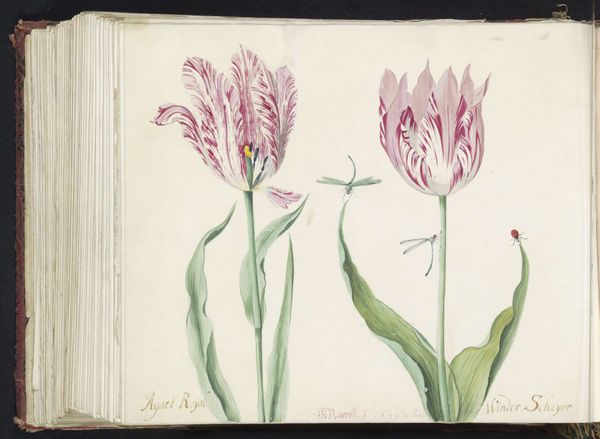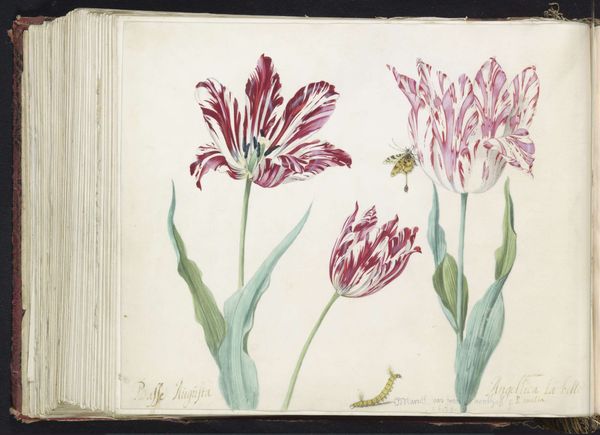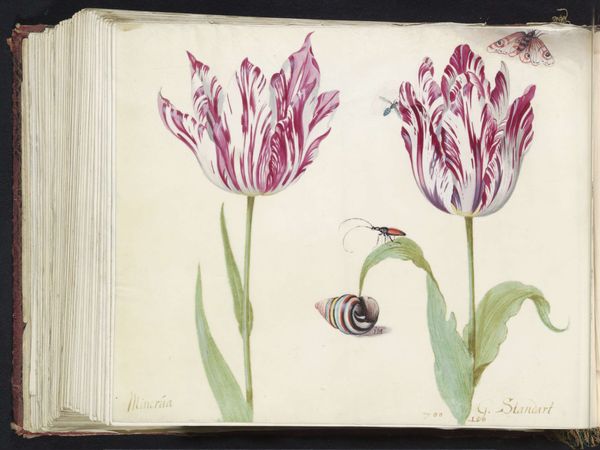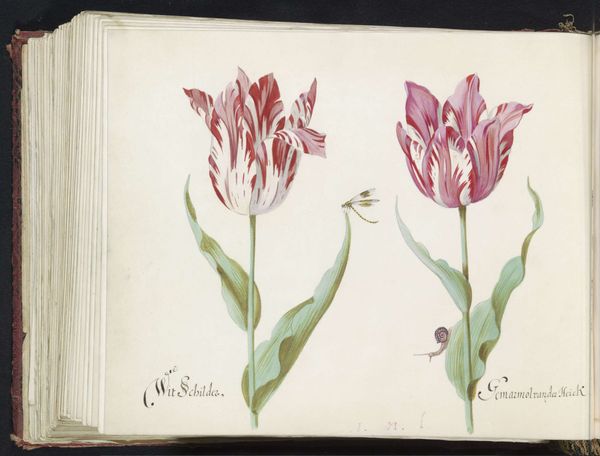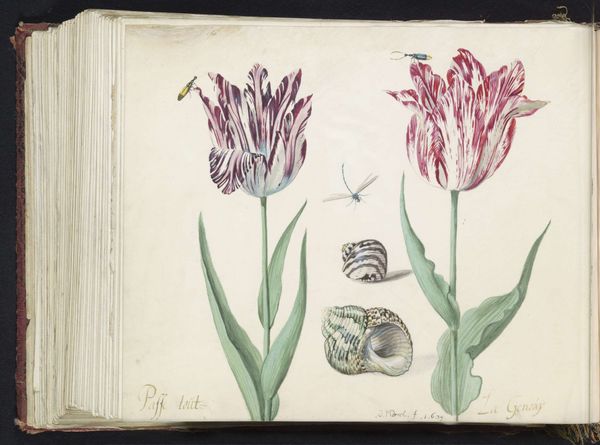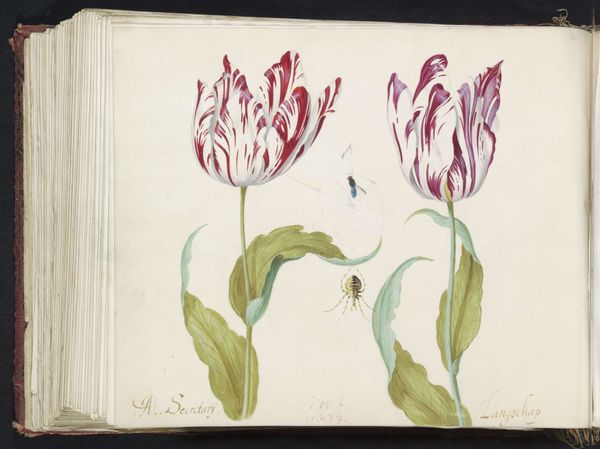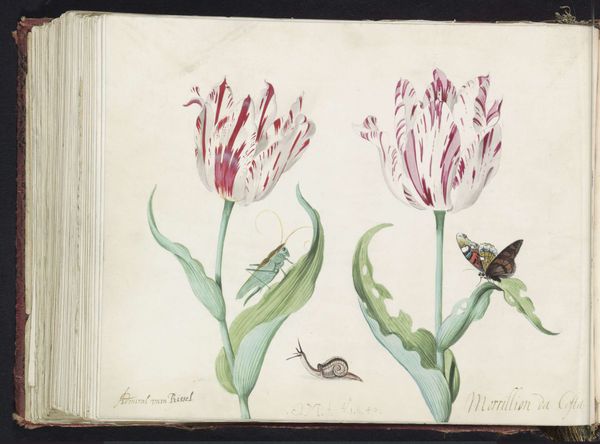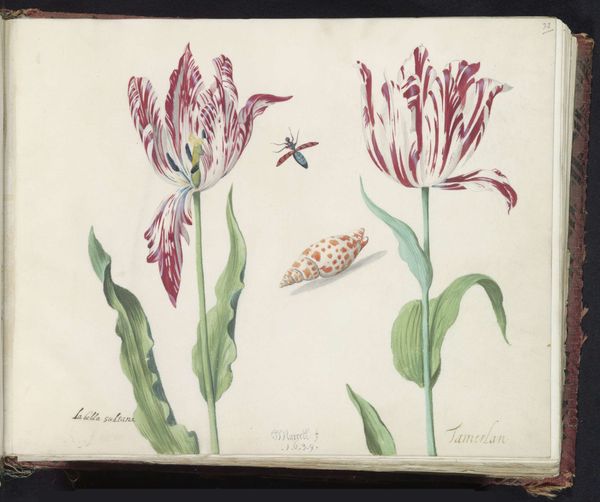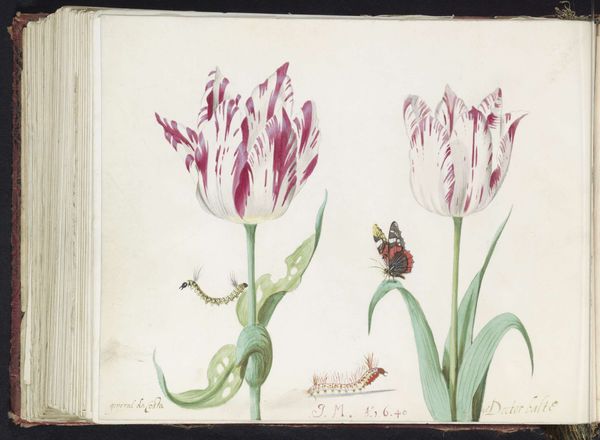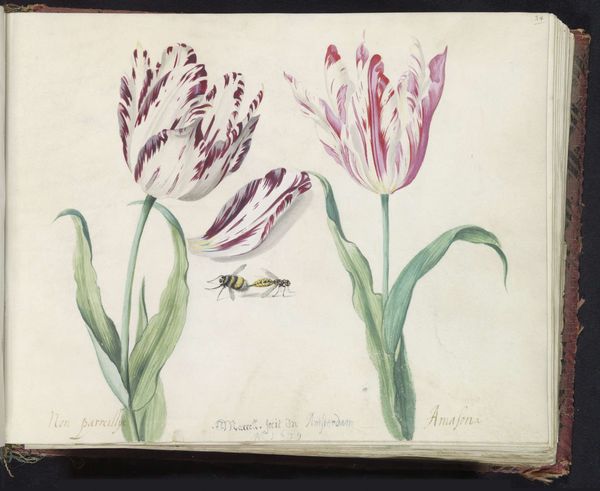
tempera, painting, watercolor
#
tempera
#
dutch-golden-age
#
painting
#
watercolor
#
coloured pencil
#
watercolour illustration
#
botanical art
#
watercolor
Dimensions: height 265 mm, width 335 mm
Copyright: Rijks Museum: Open Domain
Editor: Here we have "Three Tulips with Dragonfly and Another Insect", a tempera and watercolor painting by Jacob Marrel, dating back to 1639. The precision is quite striking. I am immediately drawn to how these distinct tulip forms command the pictorial space. What do you make of its formal qualities? Curator: A most astute observation. The compositional arrangement exhibits a sophisticated understanding of balance and counterpoint. Observe how Marrel positions the tulips at varying heights, thereby creating a visual rhythm. This rhythm is further reinforced through the dynamic interplay between the organic curves of the flora and the more angular lines of the dragonfly. Editor: I also notice the subtle shifts in coloration. The transitions from white to the maroon striations create such movement. Do you see it playing a significant role? Curator: Precisely. The deployment of color is not merely descriptive but structurally significant. Note the carefully calibrated gradation of tones, particularly within the petals. This skillful rendering of light and shadow serves to enhance the illusion of depth and volume, effectively animating the forms. What is especially fascinating, however, is that he contrasts these natural elements with a rather unnatural fantastical creature with golden features. This begs the question of how that choice relates to the rest of the painting. Editor: So the unexpected insects act as formal disruptions? Curator: Indeed, compelling us to actively examine the structure and our perception. Editor: This has deepened my insight into how these intrinsic visual strategies construct meaning and affect the whole composition. Curator: Likewise. Considering the artist's visual organization clarifies our reading experience.
Comments
No comments
Be the first to comment and join the conversation on the ultimate creative platform.
